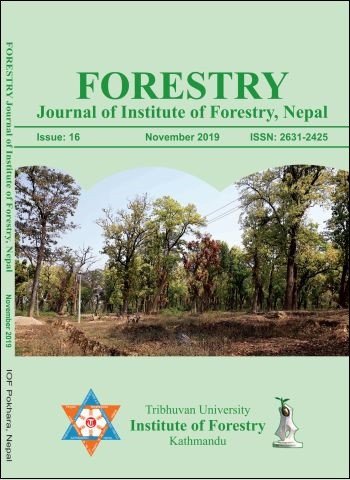Diversity of Birds in the Foothills of Phulchoki Hill, Lalitpur, Nepal
DOI:
https://doi.org/10.3126/forestry.v16i0.28354Keywords:
Avifauna, diversity of species, winter visitors, summer visitors, relative abundance, species richnessAbstract
Bird survey was conducted in Phulchoki hill during two different seasons in January 2018 and April 2018. The objective of the study was to identify seasonal avian diversity, and to determine relative abundance and species richness. Fixed radius point- count method was used to evaluate the bird diversity and their number. Shannon-Weiner Diversity Index was used to calculate the diversity of species during two different seasons. A total of 78 species of birds belonging to 7 orders and 24 families were recorded. Passeriformes was the most dominant order with 58 species and Sylvidae was the most dominant family with 14 species. 59 bird species were recorded in winter and 50 in spring seasons. The analysis of data on residential status revealed that 64 species were residents, 10 species winter visitors and 4 species summer visitors. The relative abundance of species was Very Common (n= 16), Common (n= 38), Uncommon (n= 9) and Rare (n= 15). Higher Shannon- Weiner Diversity Index (H'= 1.488) was recorded during the winter season and low during the spring season (H'= 1.169). Evenness index showed that birds were evenly distributed in winter season (E= 0.253) than spring season (E= 0.207). Maximum birds were seen in Mining area during both winter and spring season and minimum birds in the bus park area of Phulchoki due to habitat destruction and human disturbances.
Downloads
Downloads
Published
How to Cite
Issue
Section
License
© Tribhuvan University, Institute of Forestry




